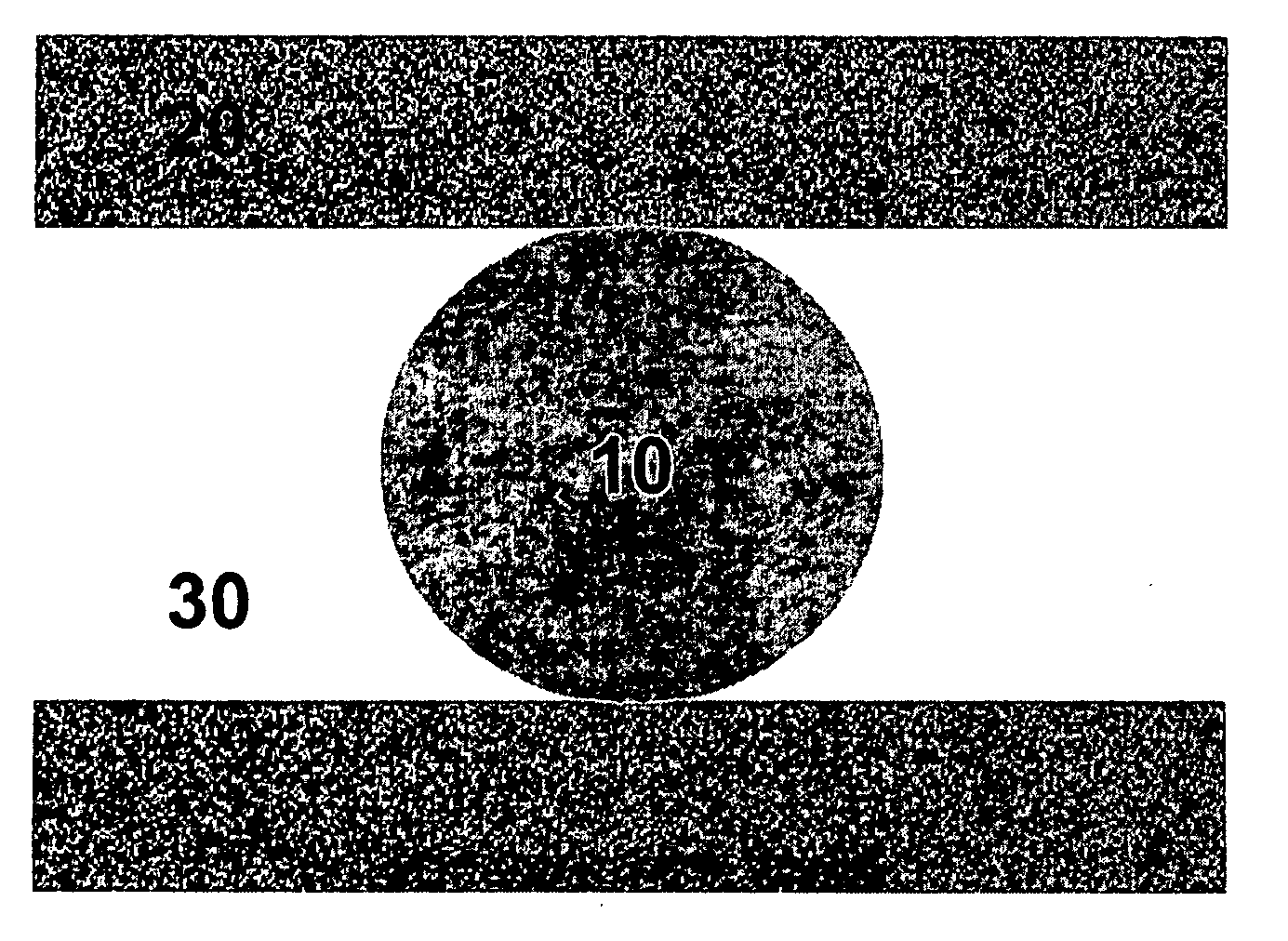Method of stimulating oil and gas wells using deformable proppants
a technology of deformation and proppant, which is applied in the direction of fluid removal, borehole/well accessories, chemistry apparatus and processes, etc., can solve the problems of loss of proppant pack width, failure of proppant, formation rock, etc., and achieves the effect of minimizing the damage of the proppant pack, improving the permeability of the retained proppant pack, and improving the production of wells
- Summary
- Abstract
- Description
- Claims
- Application Information
AI Technical Summary
Benefits of technology
Problems solved by technology
Method used
Image
Examples
examples
[0064] The degree of embedment of 20 / 40 (mesh size) LiteProp™ 125 and 20 / 40 Ottawa sand was determined by compressing a partial mono-layer (i.e., 43 particles / in2) of proppant against a shale core and measuring the displacement of a steel piston as a function of applied load, as exemplified in FIG. 3. The test, or embedment, cell was composed of a thick-walled stainless steel cylinder 10 and base plate 20, a 1-inch diameter steel piston 30, porous plate 40 on which the core sample 50 was placed. The proppant 60 was placed against core sample 50. Steel piston 30 pressed proppant 60 into core sample 50, and its displacement was used to infer proppant embedment.
[0065] Embedment was inferred by subtracting out the displacements of the core, test cell, and proppant compression. Mathematically, embedment (Δxemb) was calculated from the following expression:
(Δxemb)=(Δxgros)−(Δxsys)−(Δxcore)−(Δxprop) (1)
[0066] Details of the steps taken to infer embedment were as follows:
[0067] 1. Gro...
PUM
 Login to View More
Login to View More Abstract
Description
Claims
Application Information
 Login to View More
Login to View More - R&D
- Intellectual Property
- Life Sciences
- Materials
- Tech Scout
- Unparalleled Data Quality
- Higher Quality Content
- 60% Fewer Hallucinations
Browse by: Latest US Patents, China's latest patents, Technical Efficacy Thesaurus, Application Domain, Technology Topic, Popular Technical Reports.
© 2025 PatSnap. All rights reserved.Legal|Privacy policy|Modern Slavery Act Transparency Statement|Sitemap|About US| Contact US: help@patsnap.com



